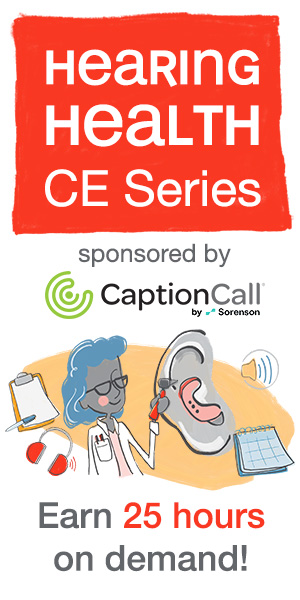Siemens Survey on Teens' Listening Behaviors
Carolyn Smaka: Hi Donna, thanks for your time. Why did Siemens decide to survey teens in the U.S. – what was the purpose?

Donna Grant: Carolyn, Siemens is not just a manufacturer of hearing aids—we’re in the overall hearing health business. Over the years, we’ve recognized an alarming growth in risky listening behaviors that could cause hearing loss —especially among teenagers. We wanted to better understand this trend, so we enlisted a third-party research firm to help us.
Carolyn: In terms of methodology, how was the survey conducted?
Donna: Siemens commissioned ReRez Research of Dallas, Texas, to survey 500 teenagers between the ages of 13 to 19 from across the U.S. Half of them were male and half were female.
Carolyn: What were the general findings?
Donna: Overall, we found that more and more teens are engaging in dangerous listening habits—and at rates higher than any of us had expected. Perhaps the most startling finding was that nearly half (46 percent) of teens reported symptoms such as ringing, roaring, buzzing, or pain in their ears. Of this 46 percent, 17 percent admitted having these symptoms often or all the time. Even teens as young as 13 years old reported symptoms. Fortunately, the majority of these teens are not reporting any signs of hearing loss, but 17 percent represents 1 in 6 teens or roughly 5 students in a typical classroom. This is enough to represent a serious concern.
Carolyn: How many teens reported engaging in dangerous listening habits?
Donna: Nearly nine out of 10 (88 percent) engage in at least some risky behaviors such as listening to loud music with headphones or earbuds, using loud power tools or using noisy powered toys without hearing protection. That is a pretty large statistic.
Seventy-eight percent of the teens reported that their parents or teachers would tell them to lower the volume, wear protective gear, or stop if they had any idea just how loud their music was. The teens are indicating that parents and teachers would probably caution them to be careful when they are engaging behaviors, indicating that they know the risks, yet still choose to ignore them. Unfortunately, as the findings indicate, this kind of risky behavior may have consequences.
Carolyn: This survey has gotten some great publicity, and it’s perfect timing for National Protect Your Hearing Month in October. Can you talk about the message that Siemens is communicating about mitigating the risk?
Donna: Yes, we have developed some recommendations to help teens mitigate the risk. These are great for family members, friends, teachers, and parents to know about. For example, if after wearing headphones or earbuds you notice ringing, roaring, or buzzing in your ears, turn down the volume. This could be a sign that you are damaging your hearing.
When going to a concert or club, sit in the middle of the room. That will allow you to still hear and see it all, but perhaps at a safer volume. Consider getting musicians’ earplugs if you go to these types of events more than twice a year or if you are a musician yourself. If you are working with noisy tools, like lawn mowers and power saws, definitely wear ear protection.
Another message is simply to “help a friend.” If you are sitting next to someone and you can hear music through the headphones, ask them to turn it down. Peers listen to peers. If another teenager were to say, “Hey, I can hear every word to that song you are listening to - turn it down,” that would have an impact. Also, visit a hearing care professional to obtain a baseline evaluation of your hearing. Professionals also offer custom hearing protection for musicians or people who frequent high decibel hearing environments.
With all of the great portable technology today, children are being exposed to loud listening levels so much earlier than previous generations. It’s not uncommon to see young children wearing headphones and watching movies on a tablet, or listening to music on an MP3 player. I think this survey will go a long way to raising awareness of hearing and hearing protection.
Carolyn: How can professionals utilize this campaign to promote themselves and their services?
Donna: Along with the press release, we’ve released an infographic about the survey results. Professionals can share it on their social media including Facebook and Twitter, where we know teens are today. They can also put our infographic up in their offices. This is a great opportunity also for professionals to consider providing noise protection services as well as musicians’ plugs and high-decibel hearing protection.
Professionals can leverage the momentum of this campaign in the media, and piggyback on it by issuing their own press release with an offer to be interviewed by their local media. I think this important and engaging campaign is a great opportunity for hearing care professionals to reach teens and young adults.
Carolyn: Thanks for your time today, Donna.
For more information on the survey, and to download a full report from Siemens on the survey findings, please visit https://usa.bestsoundtechnology.com/children-and-hearing-loss/teen-hearing-loss/. You may also learn more about Siemens on the Siemens Expo Page on AudiologyOnline.


